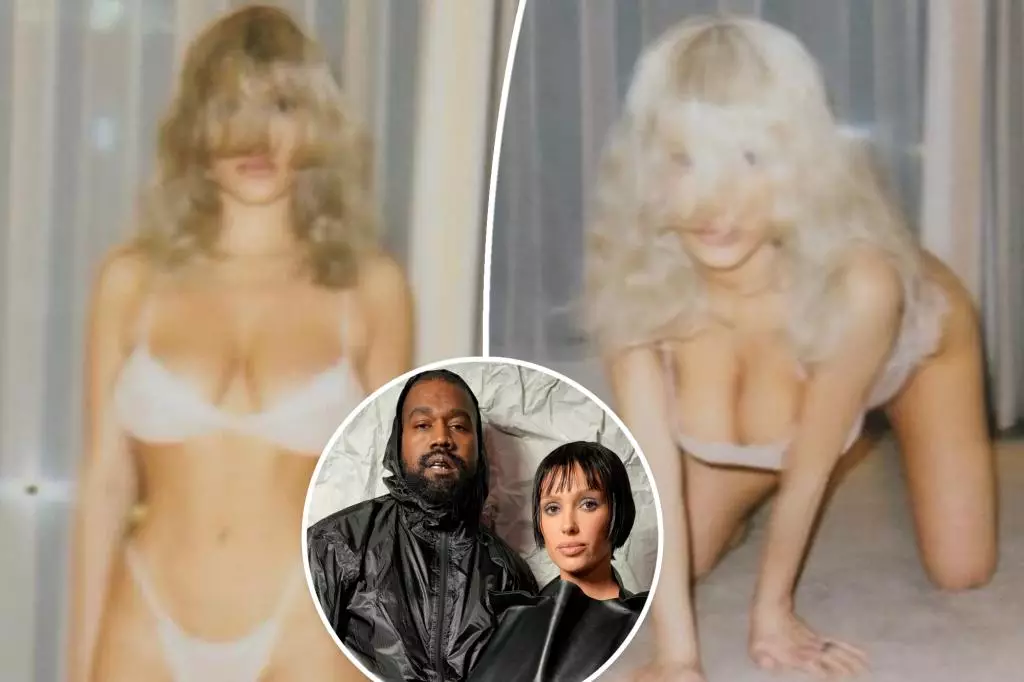Bianca Censori’s daring fashion choices are emblematic of an evolving cultural landscape where individual expression often clashes with societal expectations. Her propensity to wear provocative ensembles—not merely for aesthetic appeal but seemingly to make a statement—testifies to a deliberate challenge against traditional notions of modesty and decorum. Through her revealing outfits, Censori not only pushes boundaries but also sparks conversations about body positivity, freedom, and the role of women in redefining fashion standards. This act of unabashed self-expression can be seen as an assertion of autonomy, challenging viewers to reconsider what constitutes appropriate public attire and the societal constructs that restrict personal freedom.
While critics might dismiss her wardrobe as attention-seeking, it’s impossible to deny the power dynamics at play. The act of dressing provocatively, especially as a public figure associated with celebrity culture, transforms the individual from passive object to active agent. Censori’s choice to dress in ways that leave little to the imagination defies conventional taboos, embracing vulnerability and confidence simultaneously. It’s a bold assertion that personal choice should triumph over societal judgment, even if it invites controversy or backlash.
The Commercial and Cultural Elements of Shock Value
An essential aspect of Censori’s provocative fashion statements revolves around her collaboration—whether strategic or subconscious—with branding and commercial interests. Her ensembles, often involving high costs paid by Kanye West, serve a dual purpose: they elevate her profile and generate media buzz. In a culture saturated with celebrity-driven spectacle, controversy becomes currency. The lavish expense West reportedly invested in her outfits underscores a calculated effort to craft a provocative persona that captures attention, fuels public discourse, and ultimately, cements her status as a daring icon.
However, this spectacle-driven approach raises questions about authenticity. Is Censori’s wardrobe merely an extension of her personal identity, or is it a carefully curated performance designed to secure fame and influence? In the modern fashion era, where shock often translates into virality, the line between genuine self-expression and strategic image crafting increasingly blurs. The controversial nature of her outfits—ranging from see-through dresses to candy-themed lingerie—further emphasizes the spectacle’s role in elevating her visibility. It’s a reminder that in an age of social media domination, visual impact often trumps subtlety, and controversy often becomes a means to an end.
The Impact of Public Perception and Media Narratives
Censori’s flamboyant fashion choices also serve as a barometer for how media narratives shape and reflect societal attitudes towards sexuality, gender roles, and fame. Her revealing ensembles, often documented extensively online, tend to elicit polarized responses. Some view her as a liberated pioneer challenging outdated standards, while others dismiss her as merely sensationalist. The media’s framing—sometimes praising her boldness, other times criticizing her for superficial displays— is indicative of broader societal tensions about morality, femininity, and power.
Moreover, her close association with Kanye West complicates perceptions further. West’s notoriety for controversial statements and unpredictable actions magnifies the attention on Censori. Critics argue that her provocative attire is exploited as part of a larger spectacle, feeding into narratives of fame through controversy. Yet, it could also be argued that her boldness exemplifies a new form of agency, where women use their bodies and fashion as tools to challenge patriarchal constraints and redefine their identities on their terms.
The Price of Pushing Boundaries in the Age of Celebrity
There’s no denying that Bianca Censori’s daring aesthetic comes with tangible costs—both financially and socially. The reported sums paid by Kanye West for her outfits signal the commercial value placed on her visual impact. These expenses highlight how modern celebrities often monetize shock value, transforming personal expression into profit. Yet beneath these glamorous displays lies a more complex narrative about the commodification of sexuality and identity in the celebrity sphere.
Socially, her outfits invite scrutiny and judgment, often reducing her to a symbol rather than an individual. Her participation in events like the Grammys or public outings in revealing attire feeds a cycle where spectacle becomes synonymous with fame, risking objectification and loss of autonomy. Furthermore, her association with controversial figures like Kanye West, who has made headlines for his antisemitic remarks and erratic behavior, complicates her image. It prompts a critical reflection: Is her boldness a form of empowerment, or is it being weaponized within a tumultuous celebrity ecosystem that sometimes thrives on chaos?
Ultimately, Bianca Censori’s fashion decisions stir essential debates about gender, power, and the performative nature of celebrity. Her unwavering stance on self-expression exemplifies the complex relationship between personal identity and public perception in today’s media-driven world. As society continues to wrestle with evolving norms, figures like her challenge the status quo—forcing us to confront our own judgments and the societal constructs that shape them.

